Australian Tropical Rainforest Plants - Online edition
Lantana camara L.
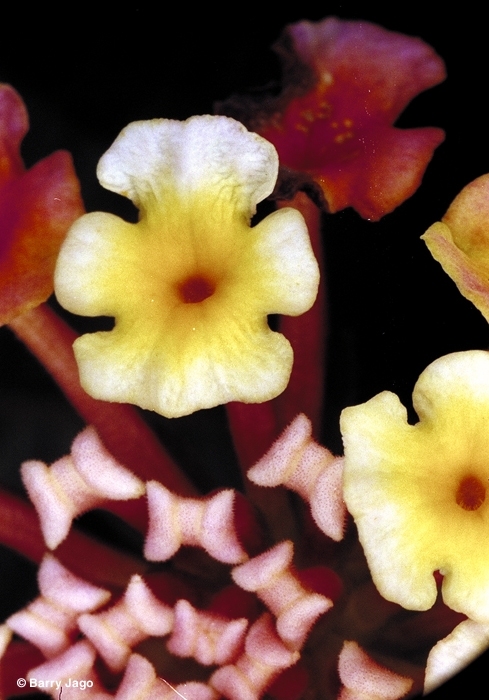
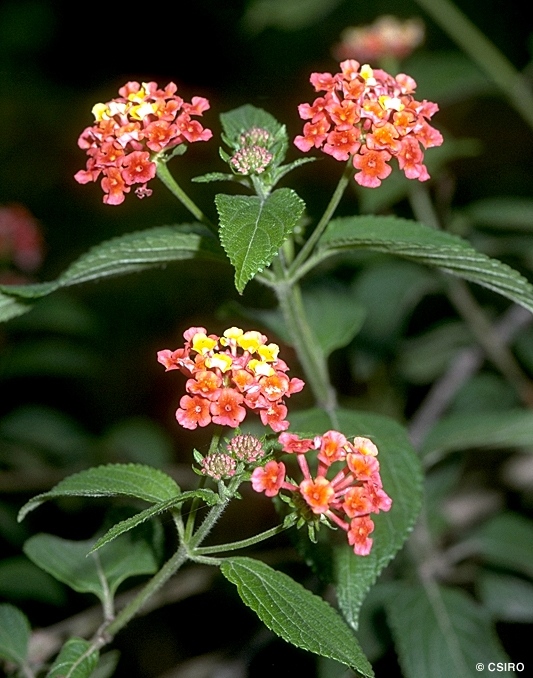
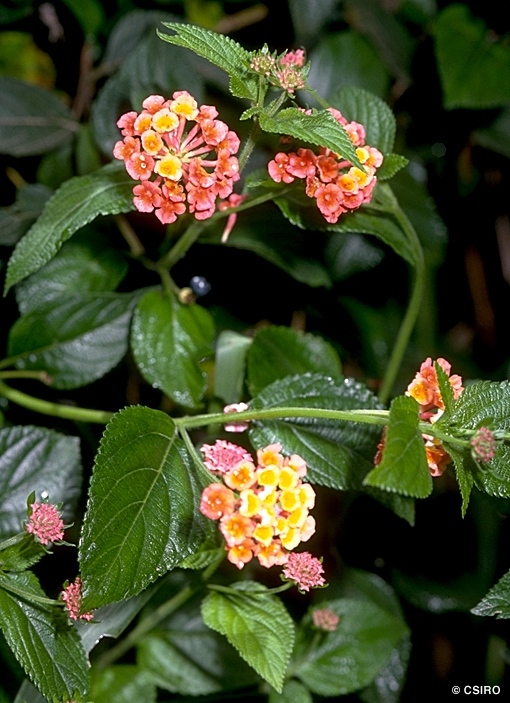
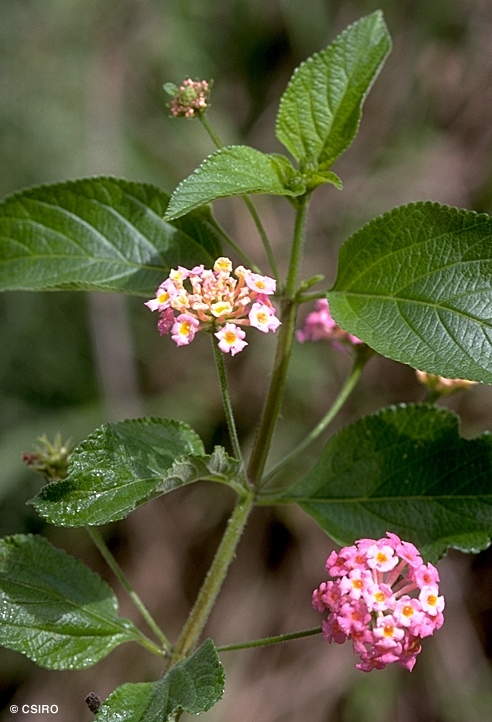
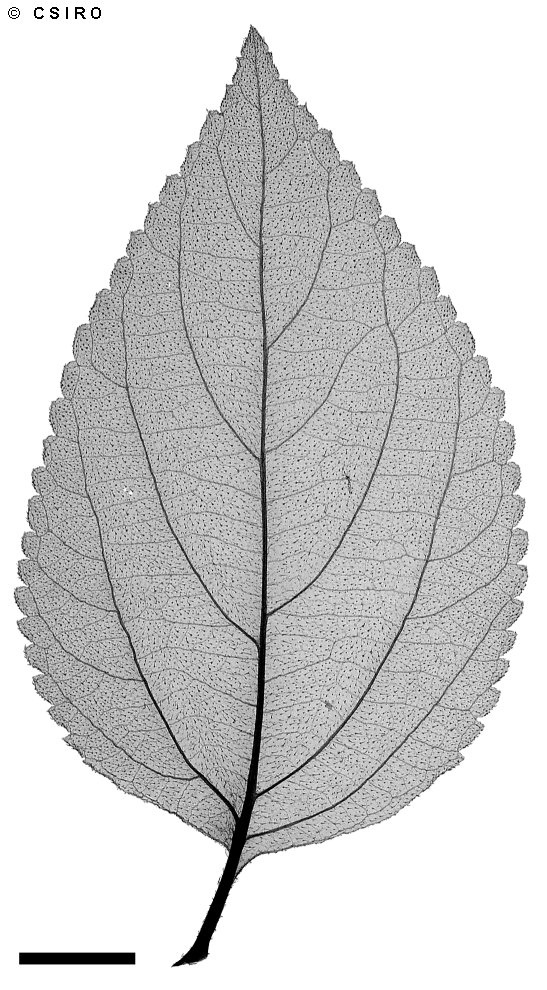
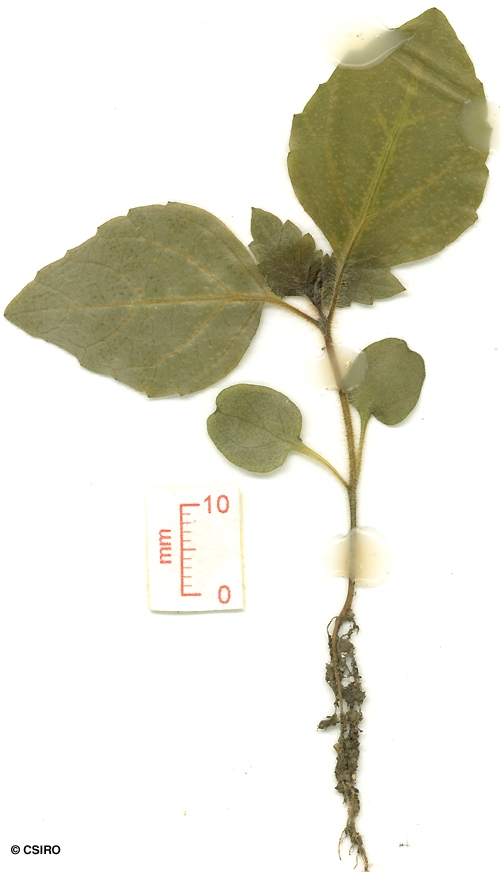
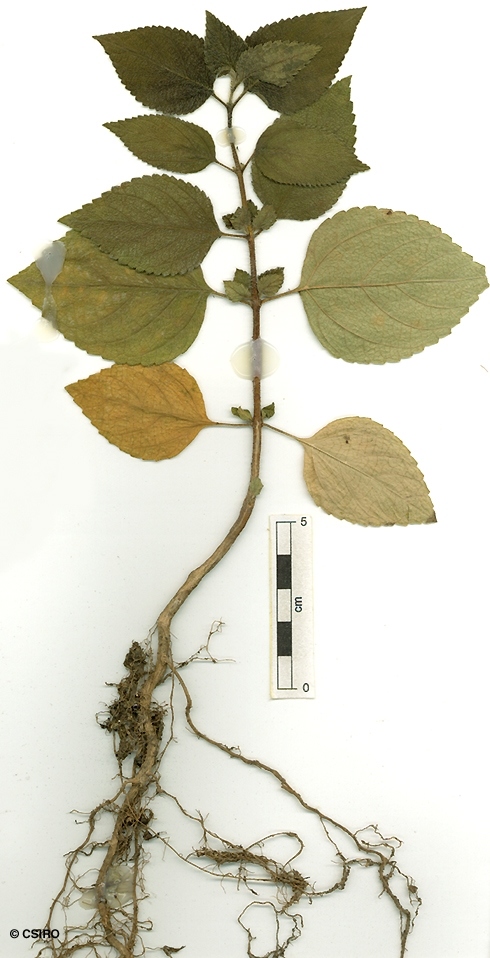
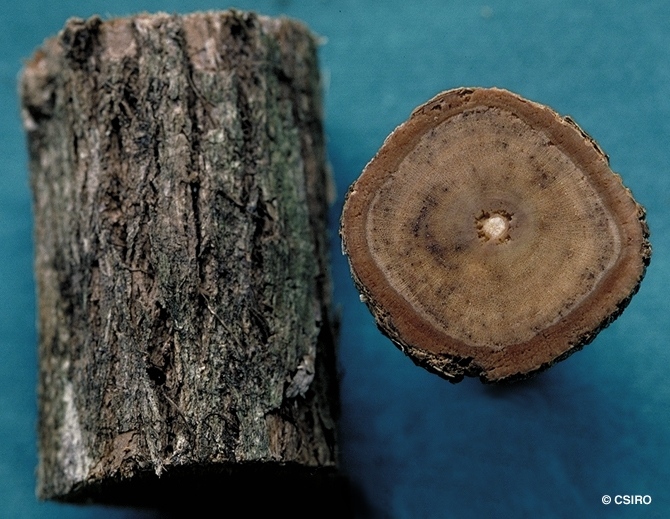
Linnaeus, C. von (1753) Species Plantarum 2: 627. Type: Habitat in America calidiore.
Lantana
Usually flowers and fruits as a shrub 1-4 m tall, sometimes growing as a disorganized climber but reaching well up into the trees. Vine stem diameters to 4 cm recorded.
Twigs and both the upper and lower surfaces of the leaf blade scabrous. Lateral and reticulate veins depressed on the upper surface. Leaf blades about 2.8-11 x 1.5-7 cm, aromatic when crushed, petioles about 0.5-1.4 cm long. Twigs 4-angled. Sparsely scattered, short, recurved spines usually found on the leaf bearing twigs.
Flowers in clusters about 2-3 cm diam., on peduncles about 20-40 mm long. Calyx hairy on the outer surface. Corolla about 10-14 mm long, minutely hairy on the outer surface. Throat of the corolla tube a different colour from the lobes and tube. Pairs of stamens attached at different levels on the inner surface of the corolla tube. Ovary, style and stigma glabrous.
Cotyledons ovate to orbicular, about 7-10 x 6-10 mm, hairy on both surfaces. First pair of leaves opposite, margin toothed at least in the upper half. At the tenth leaf stage: stem, petiole, and both the upper and lower surfaces of the leaf blade scabrous, clothed in white hairs. Leaves aromatic when crushed. Seed germination time 19 to 48 days.
An introduced weed originally from tropical America, now naturalised in WA, NT, CYP, NEQ, CEQ and southwards as far as south-eastern New South Wales. Altitudinal range in northern Queensland from near sea level to 1100 m. Grows in disturbed areas (particularly along roads) in well developed lowland, upland and mountain rain forest but also found in monsoon forest, vine thickets, wet sclerophyll forest and open forest.
There are many forms of this species and they are difficult to identify on readily available features. Flower colour is used to separate the various forms but the divisions do not always simplify the problem. Many forms are toxic to cattle and sheep. Everist (1974).
Poisonous, causing death in people who consume fruits, particularly unripe fruits.
The fruit of this species is a favourite food of Silver Eyes (Zosterops lateralis).
Lantana is a well-known stock poison, and its medicinal uses are mainly as external applications. Cribb (1981).





